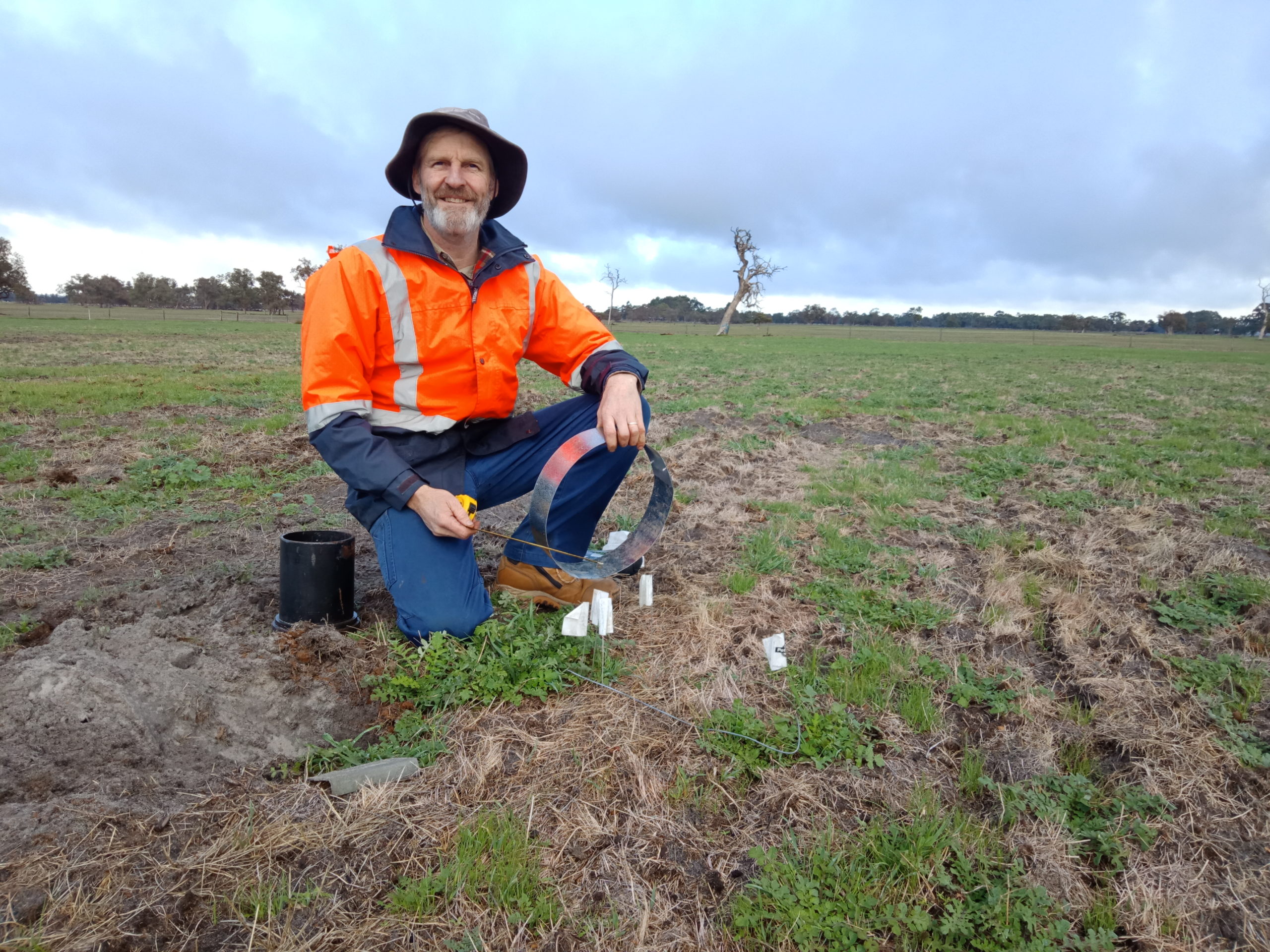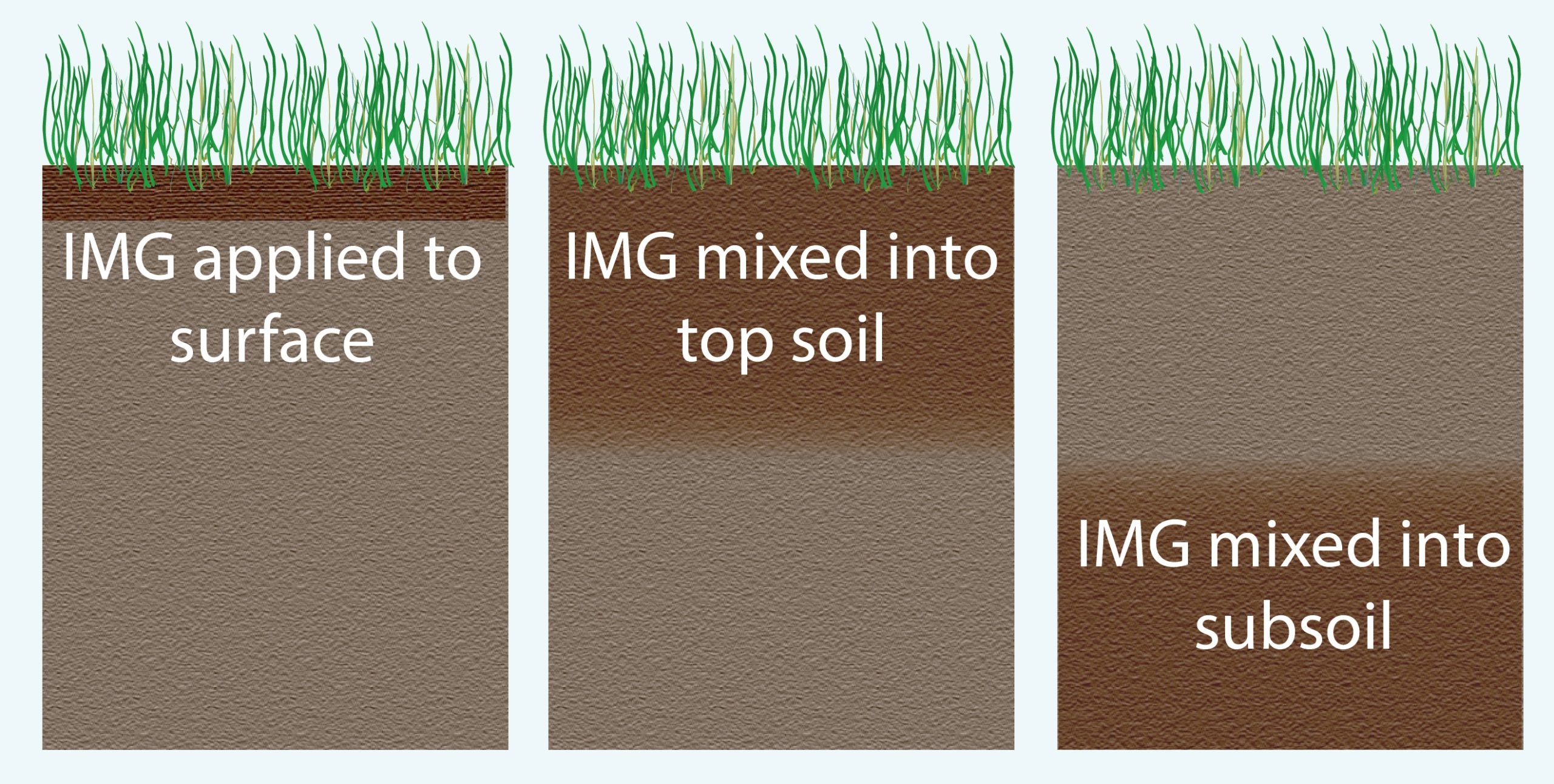Soil amendment trials
Iron Man Gypsum (IMG) is a product that has a high capacity to hold on to phosphorus. Through the Regional Estuaries Initiative IMG has been trialled on paddocks and sporting grounds to hold phosphorus where it is needed, instead of being washed into our estuaries. This work is being built on under Healthy Estuaries WA.
Why increase phosphorus retention?
Plants require nutrients such as phosphorus and nitrogen to grow. Farmers have known for decades that making sure plants get plenty of phosphorus and nitrogen, in the form of fertilisers, is vital to optimal pasture production. However, continuous application of fertilisers over the past 60 or so years has left many of our pastures with an overabundance of nutrients.
Most of the soils found on the Swan Coastal Plain are sandy, with very little clay, iron minerals or organic matter that can hold on to nutrients. Consequently, excess nutrients are easily washed through the soil as seepage or washed off as runoff. Once in our waterways, they contribute to excessive algae growth with the potential to unbalance ecosystems.
IMG consists of small iron mineral particles that have a high capacity to hold on to phosphorus, thereby increasing phosphorus in soil. This minimises the leaching of legacy phosphorus into the environment and keeps nutrients where they are needed, benefiting famers and the environment.

Soil amendments in paddocks and sporting grounds
IMG has been incorporated into the soil on paddocks and sporting grounds to trial the impact it has on phosphorus leaching and plant growth.
Under the Regional Estuaries Initiative, four trials were established exploring five application rates and three incorporation techniques on sites in the Peel-Harvey and Vasse-Wonnerup catchments. These include land used for dairy grazing, hay production and an oval used for recreational sports. Soil, leached rain water, groundwater and plants are monitored to assess:
- environmental benefits of reducing phosphorus loss to waterways
- improvements in agricultural production because of increased phosphorus retention
- any environmental risks.
Results in the first two years have found that IMG treatment can reduce the amount of phosphorus loss from productive topsoil by up to 24 kilograms per hectare and reduce runoff phosphorus concentrations by more than 90 per cent. These benefits are achieved immediately by reducing the amount of easily leached phosphorus in the soils while maintaining the amount available to plants. With several years of improved retention, the amount of phosphorus available to plants is also starting to increase. Early indications are that IMG applied to the surface can provide the same benefits as IMG mixed into the soil, but may not be as effective at limiting the loss of phosphorus through leaching.
Parallel studies have also been carried out to investigate any risks of these IMG applications to beef and dairy cattle via soil or drinking water as well as to aquatic organisms that may be in downstream waterways. These have found that IMG application to paddocks posed no risks to grazing livestock through ingestion of soil, runoff or grazing of plants growing in the treated soils. Aquatic toxicity testing also indicates that leachates and runoff from IMG-treated soils carry negligible risks to downstream aquatic ecosystems. Further verification of aquatic risks is being planned under Healthy Estuaries WA.
Findings from the trials will be used to establish guidelines for soil amendments on the Swan Coastal Plain, with results expected to be reported in late 2020. A fact sheet on using soil amendments to keep phosphorus on farms is available for download.
Incorporation techniques used in soil amendment trials

